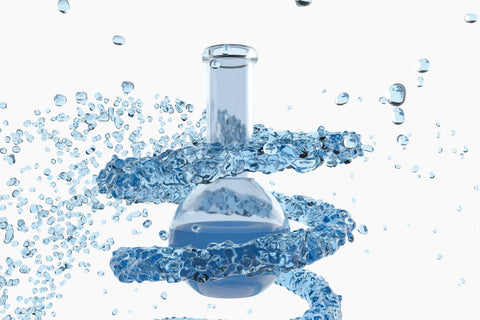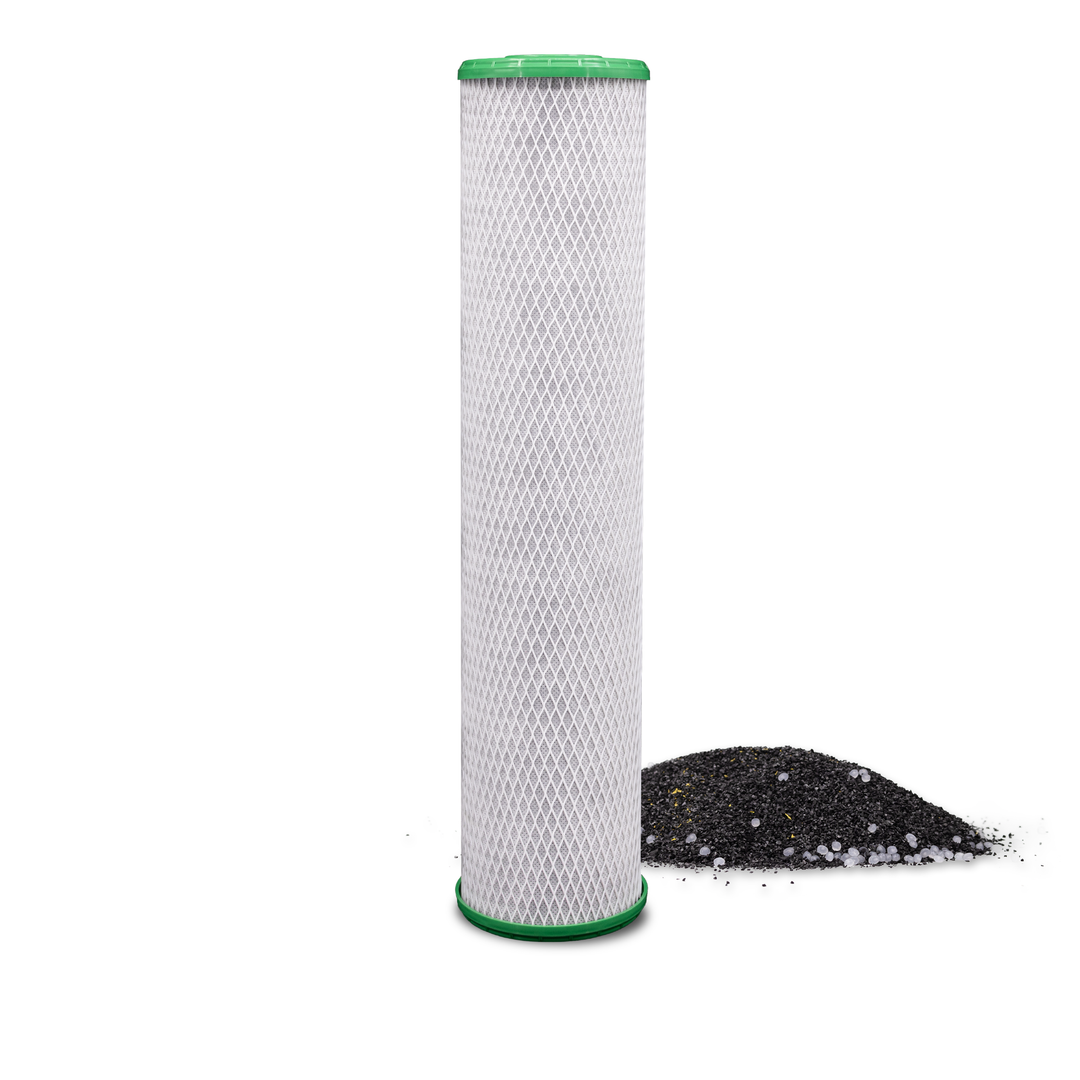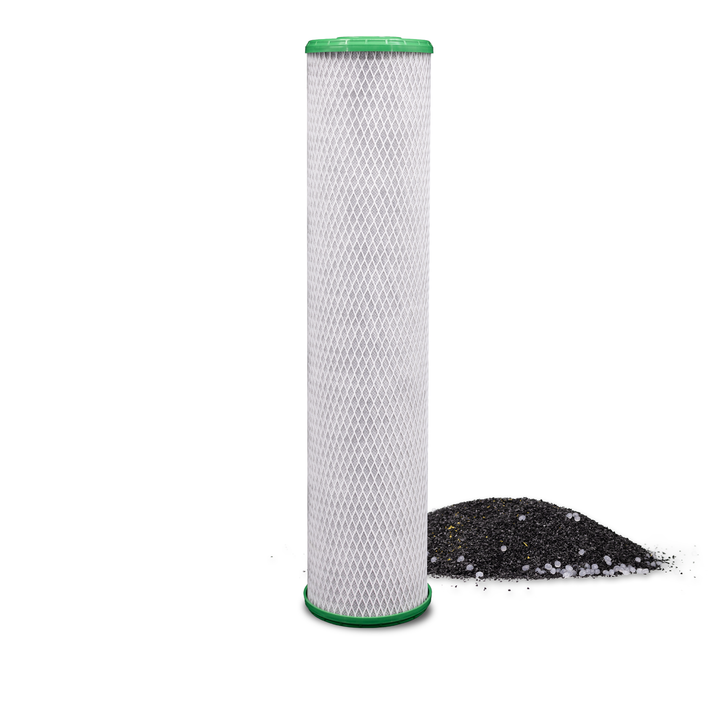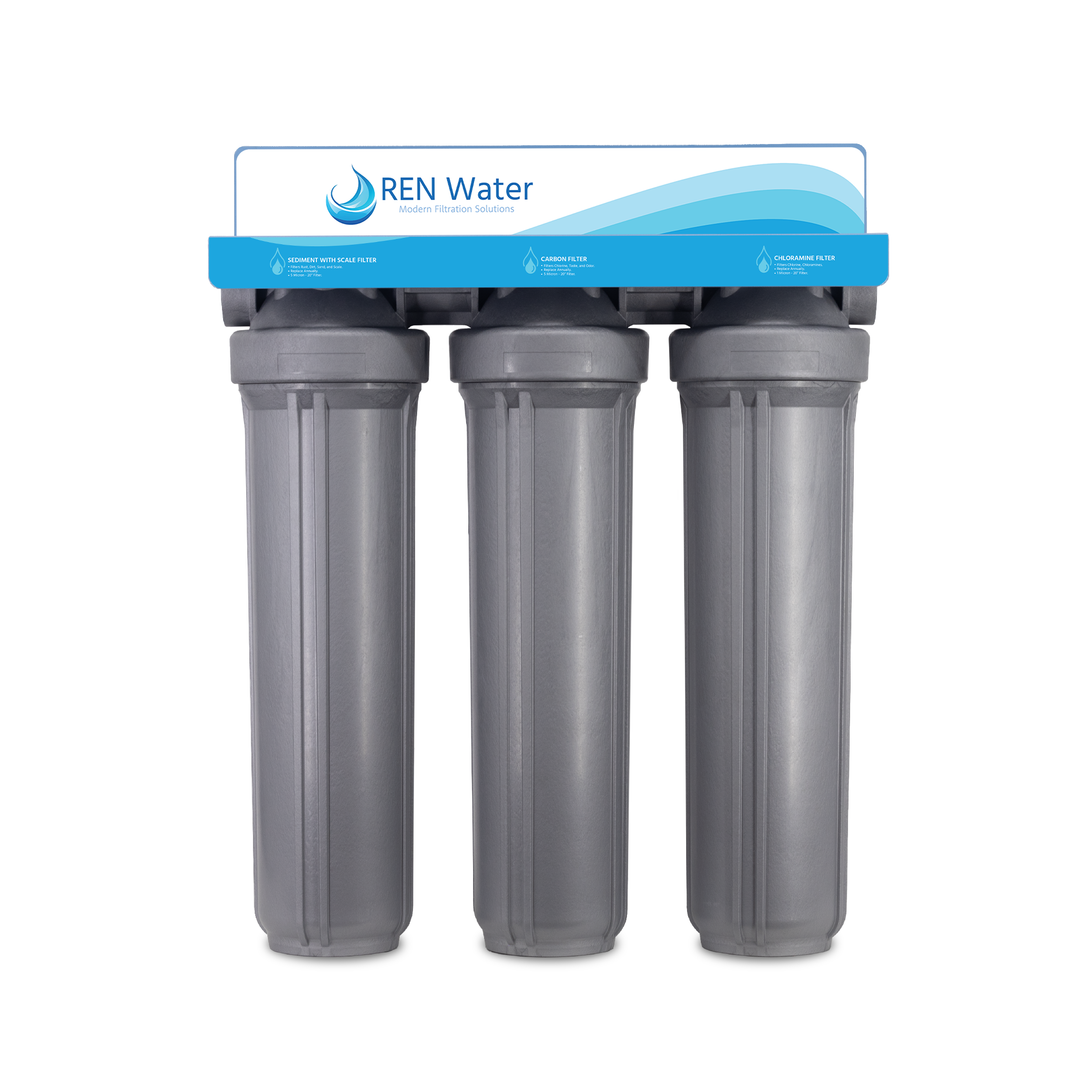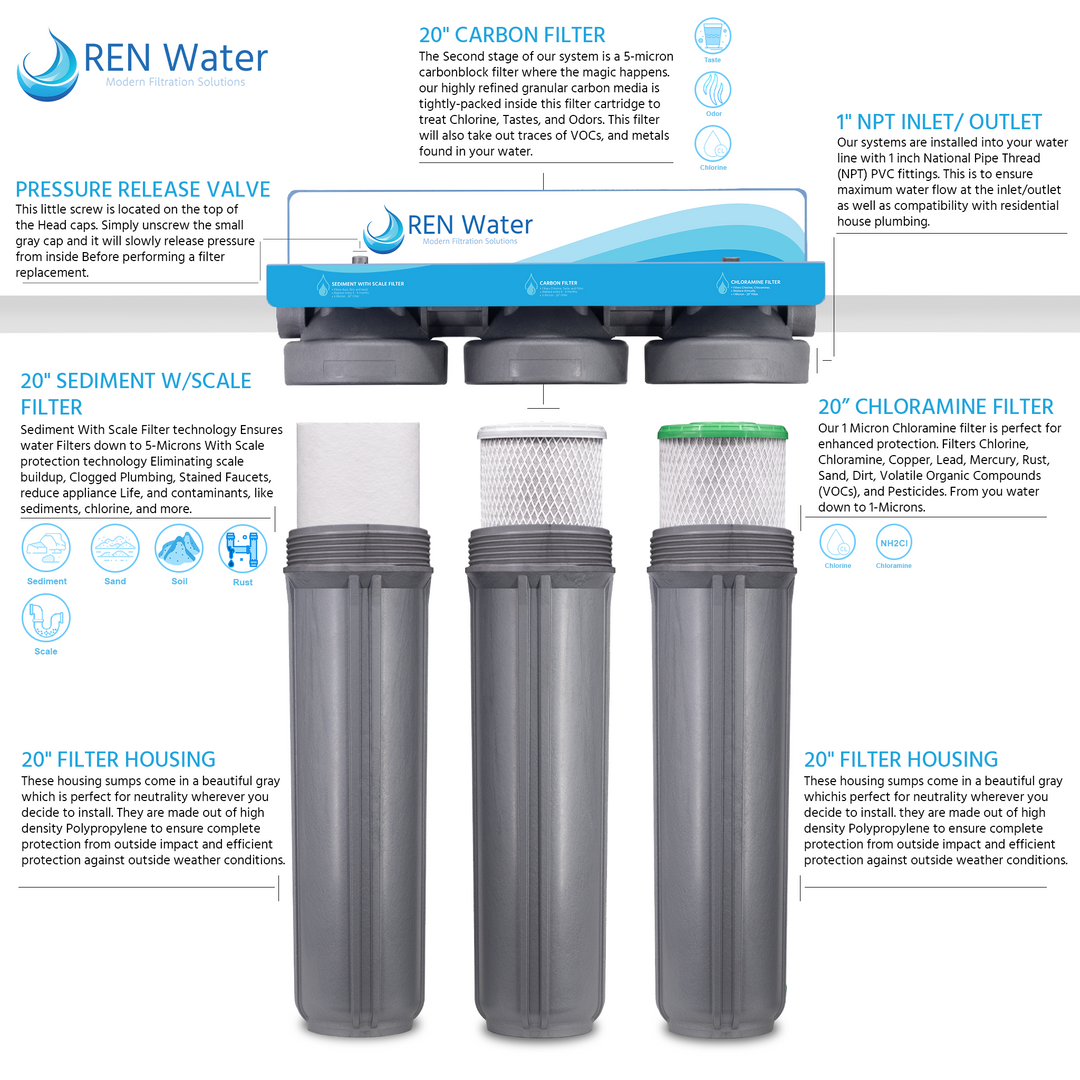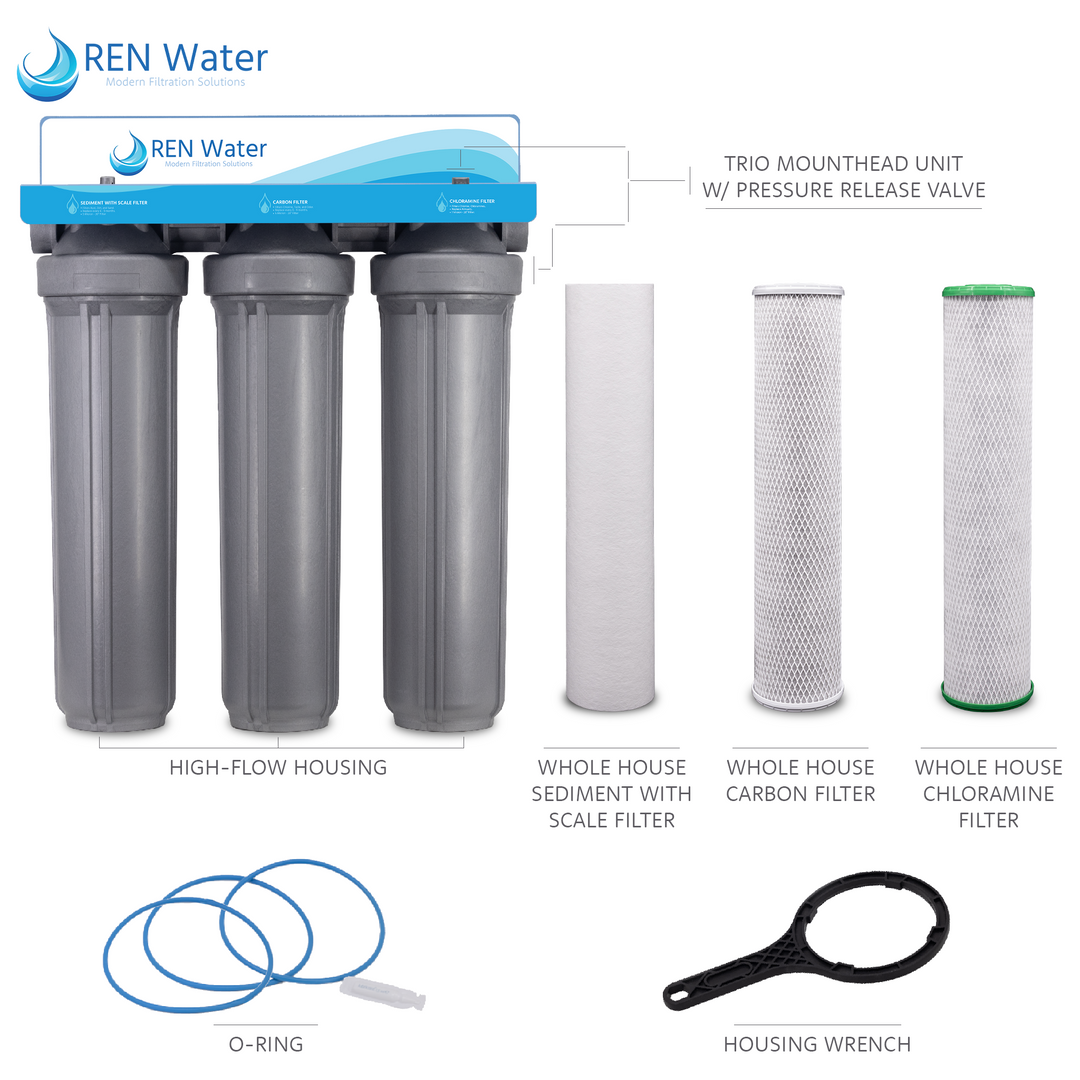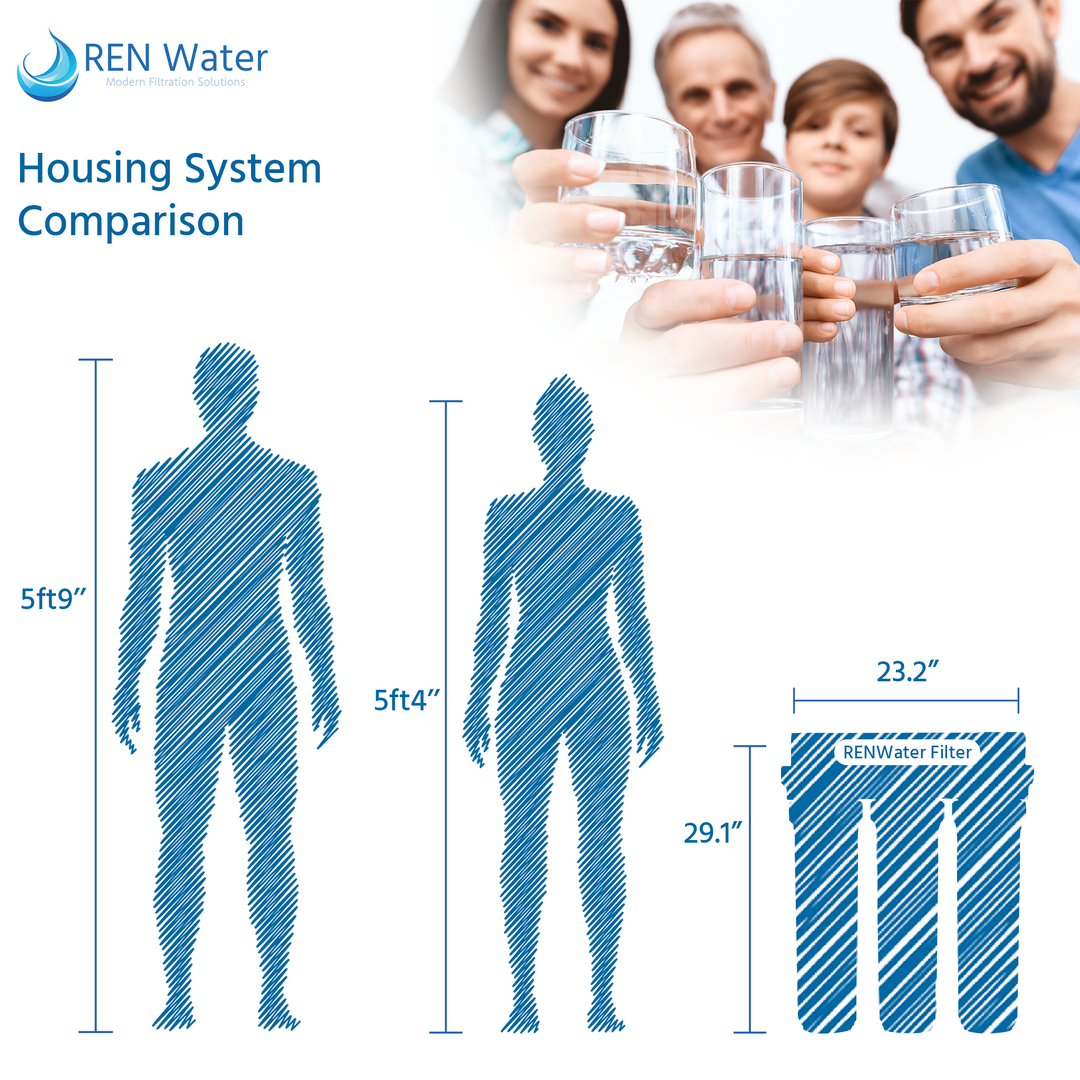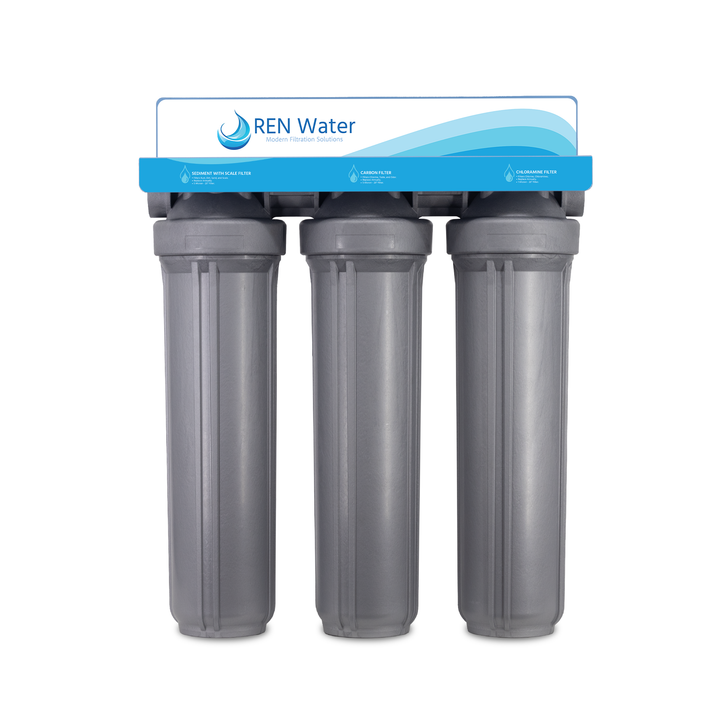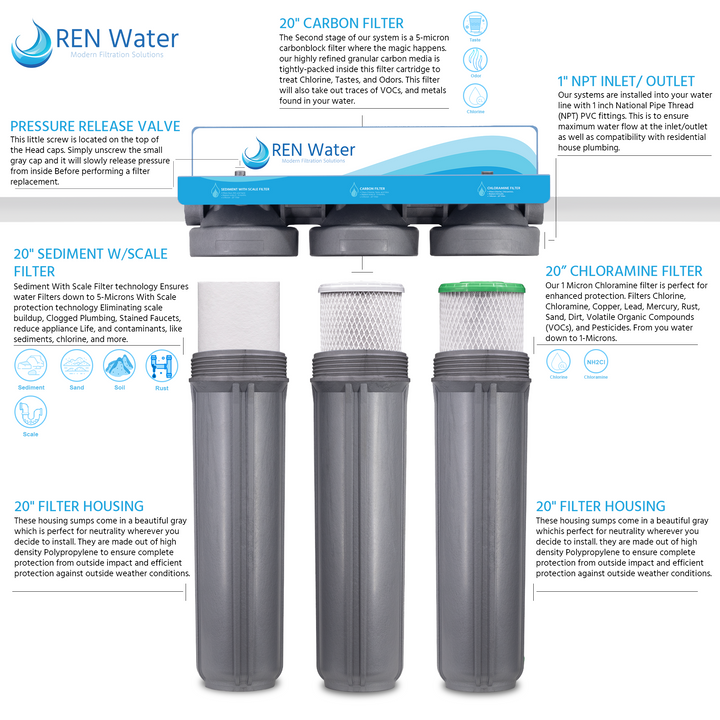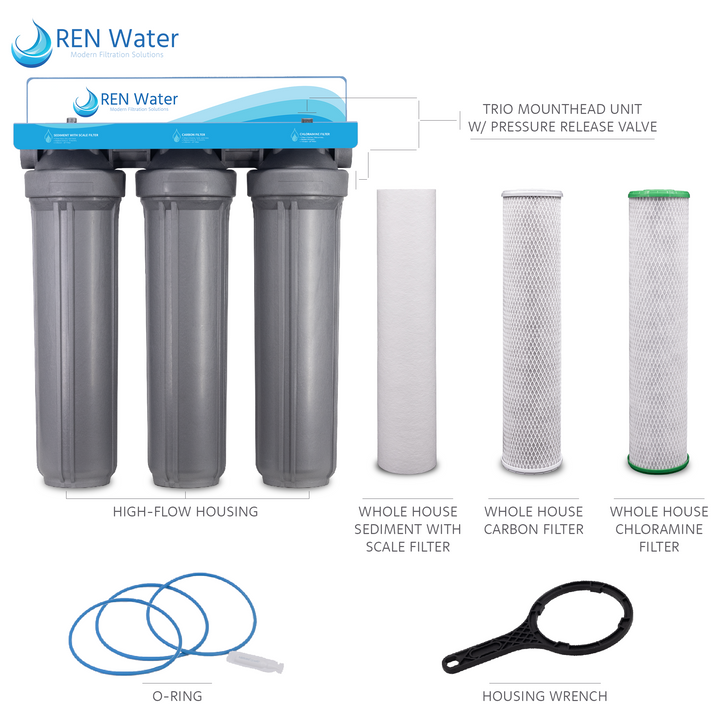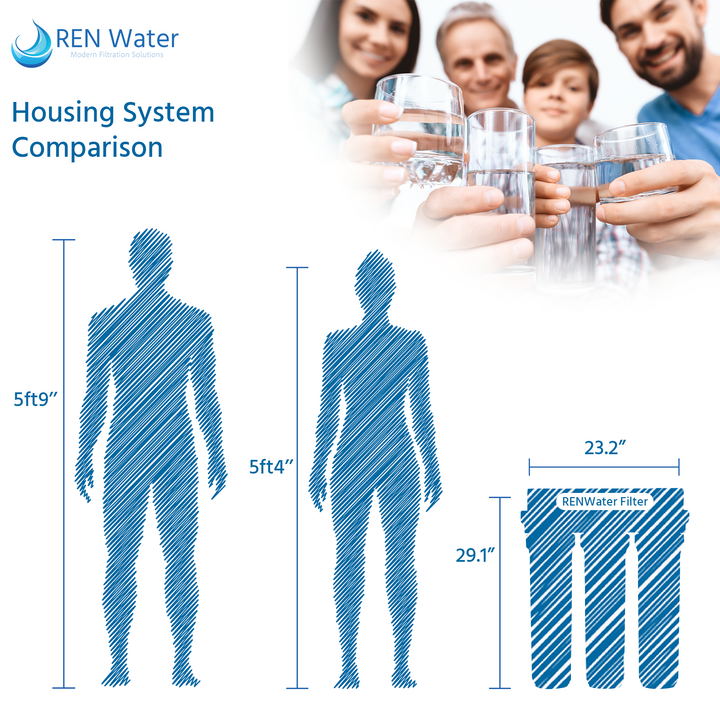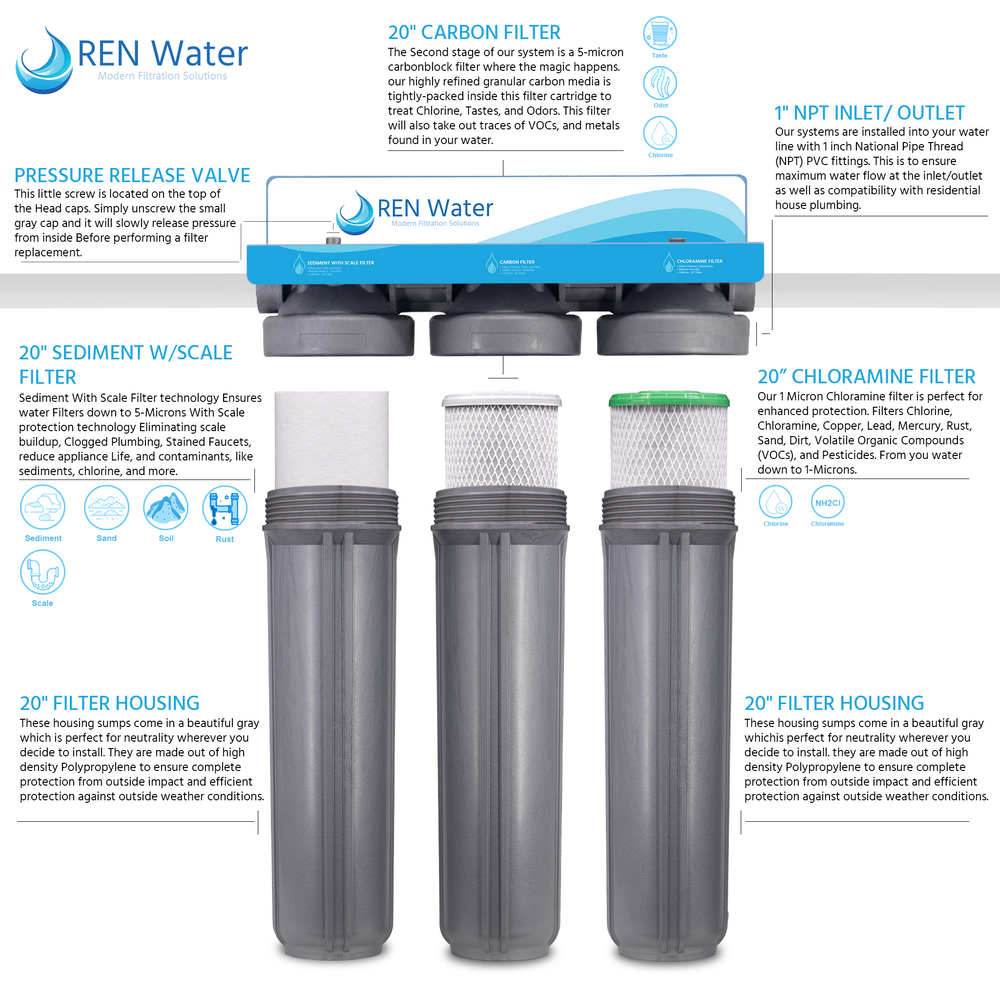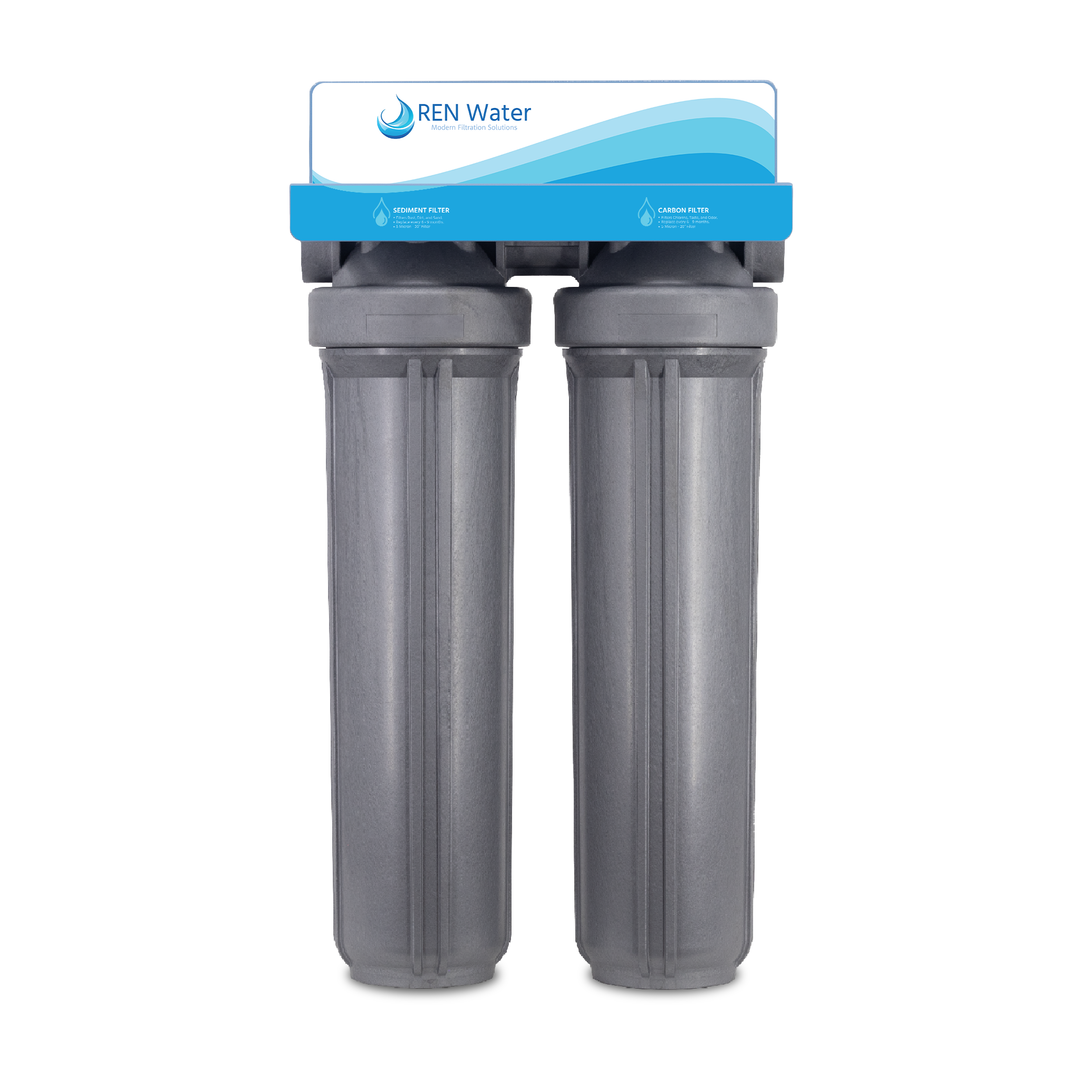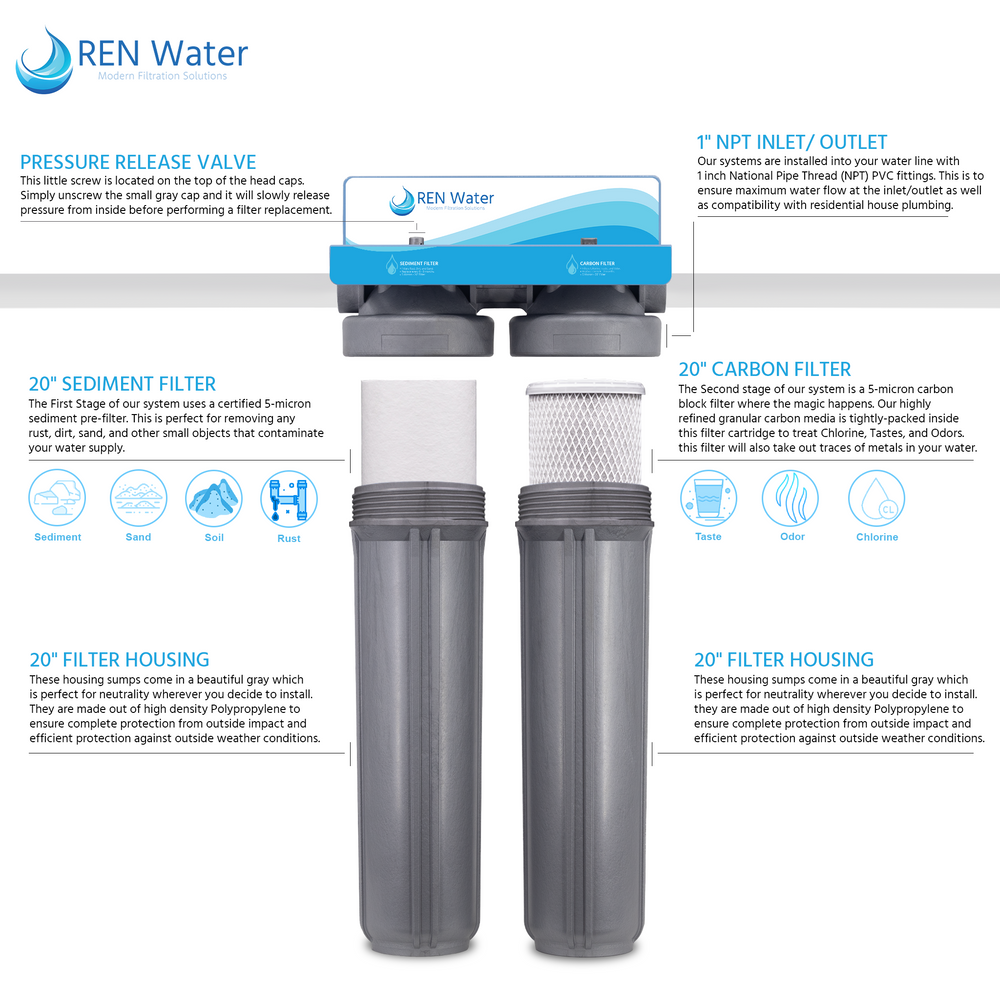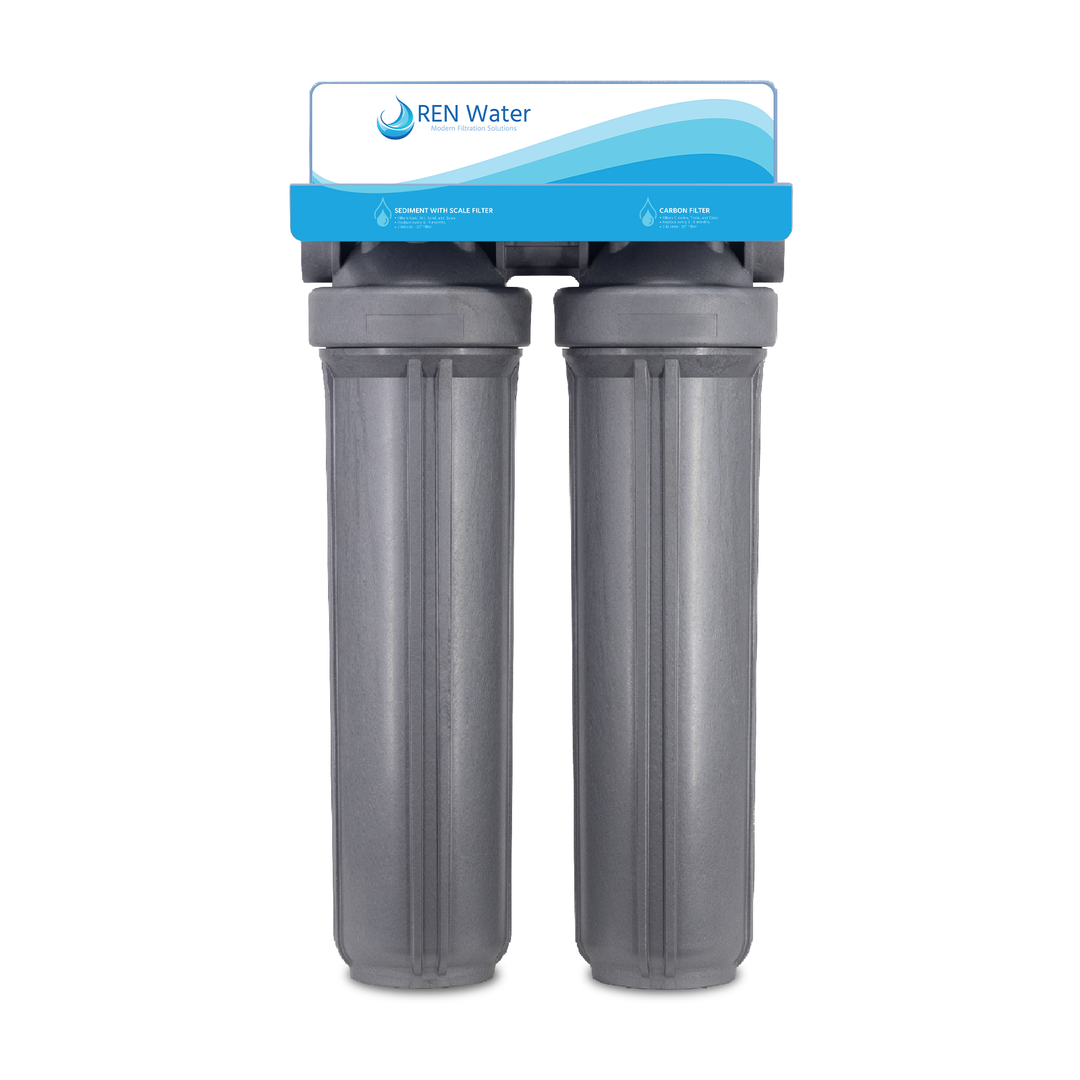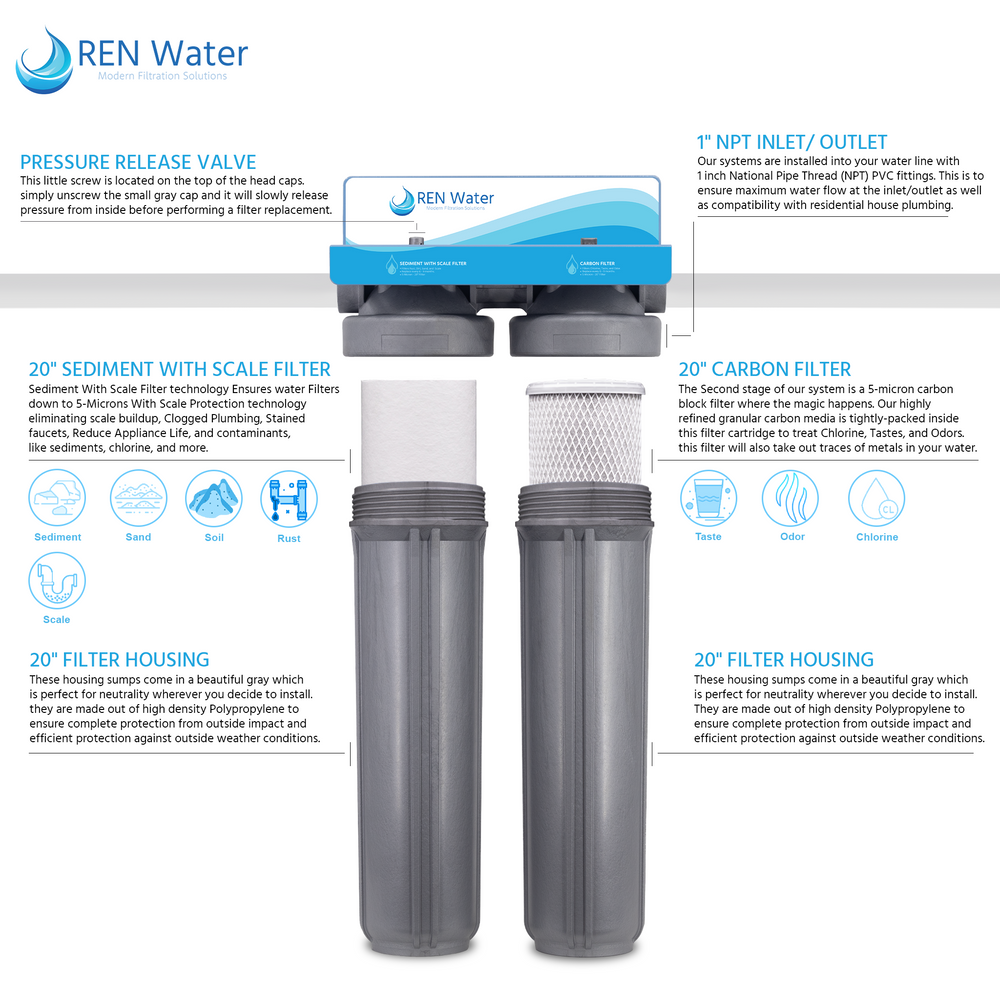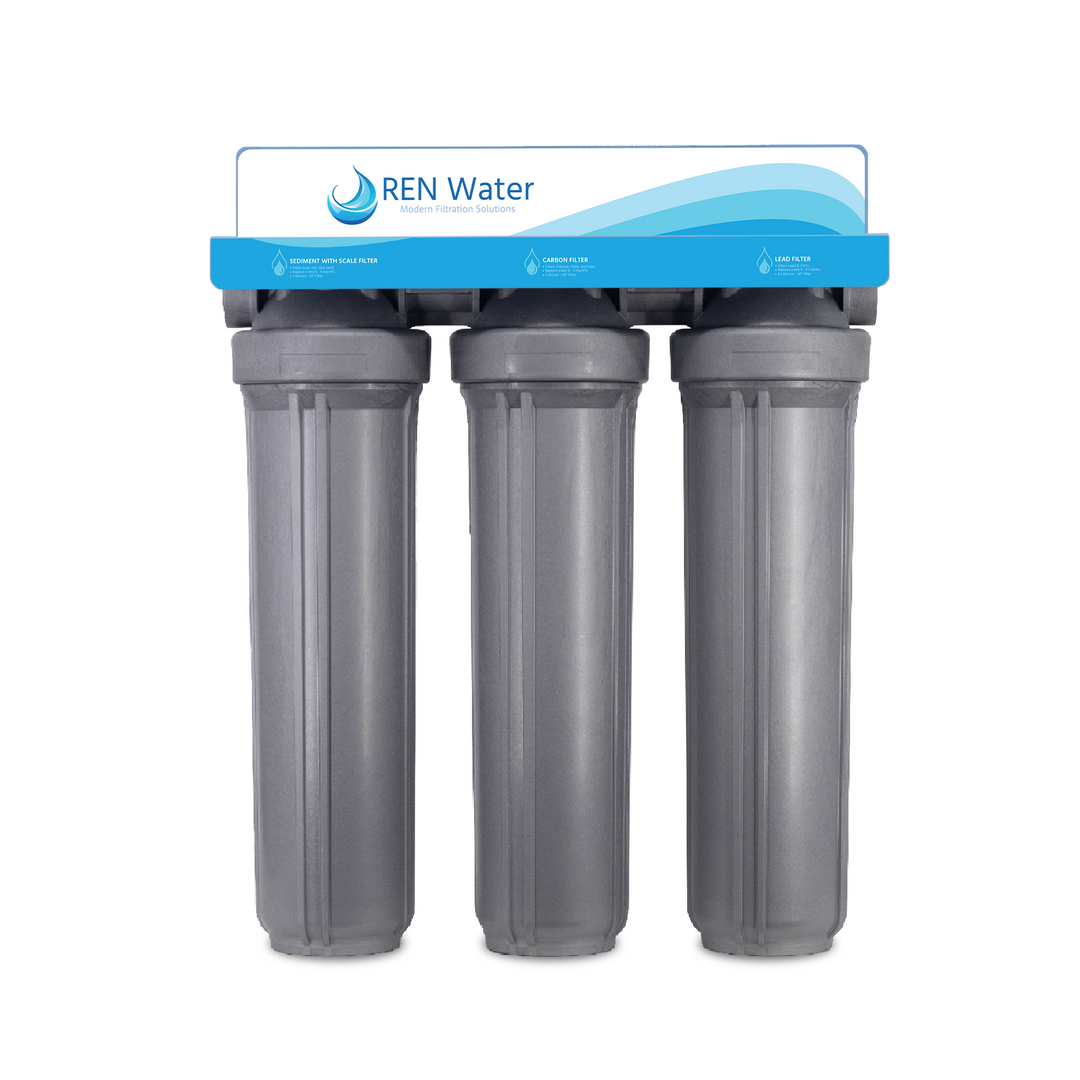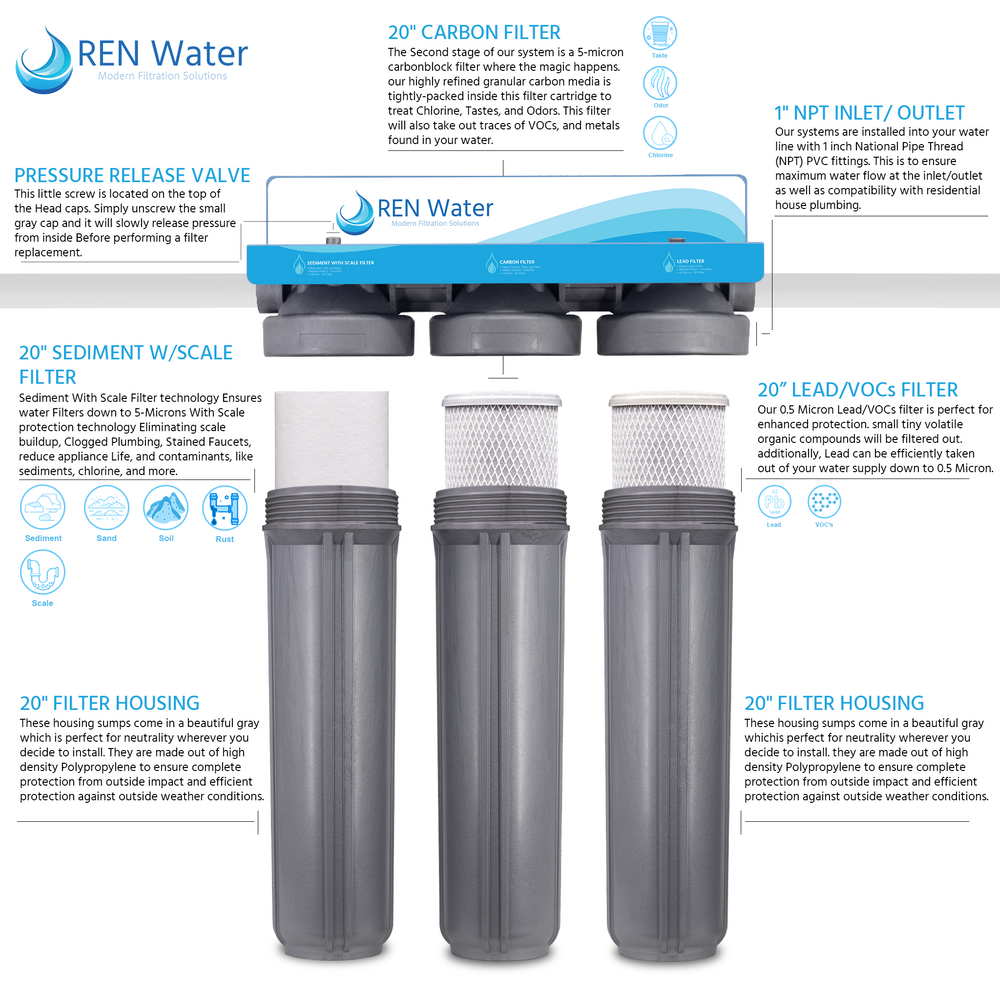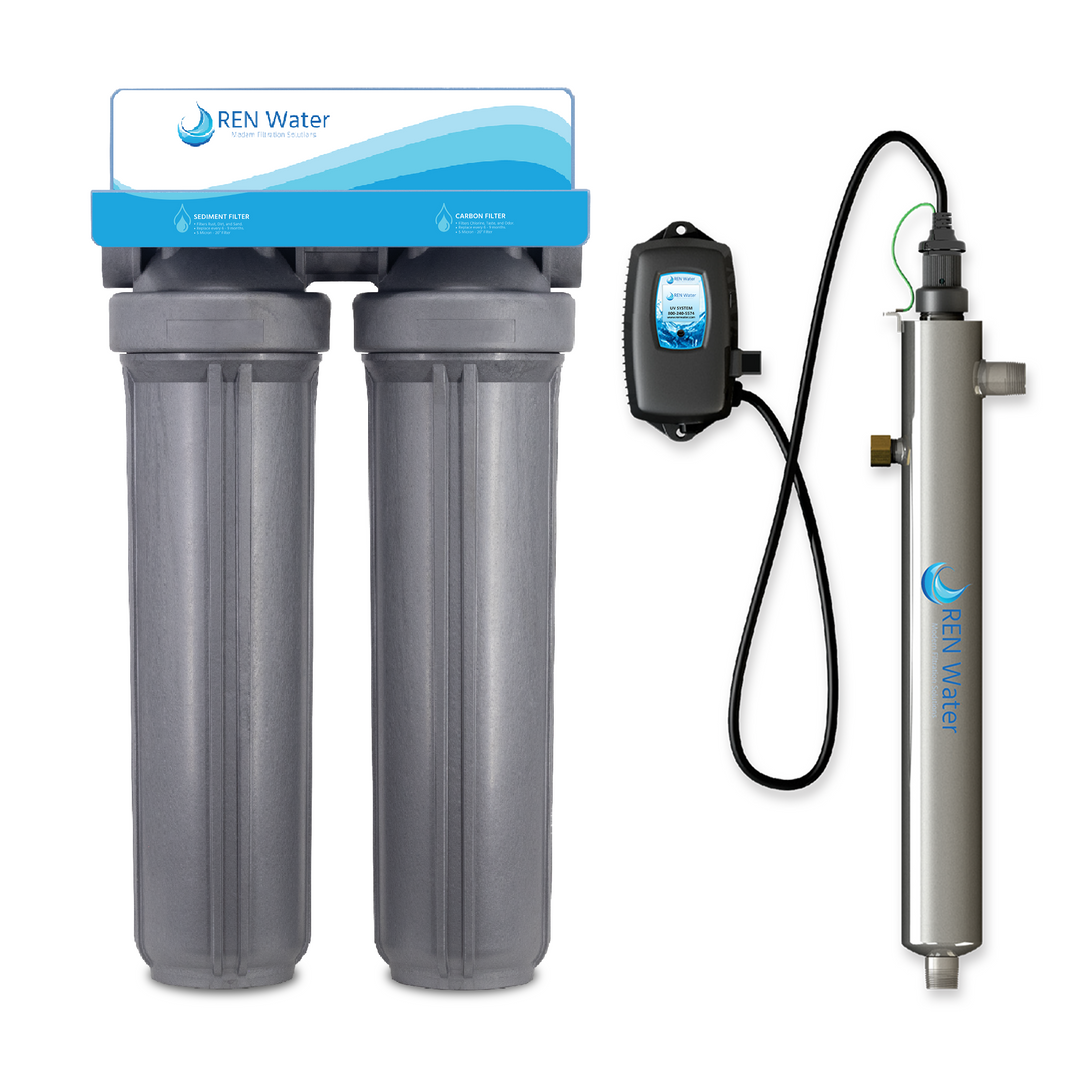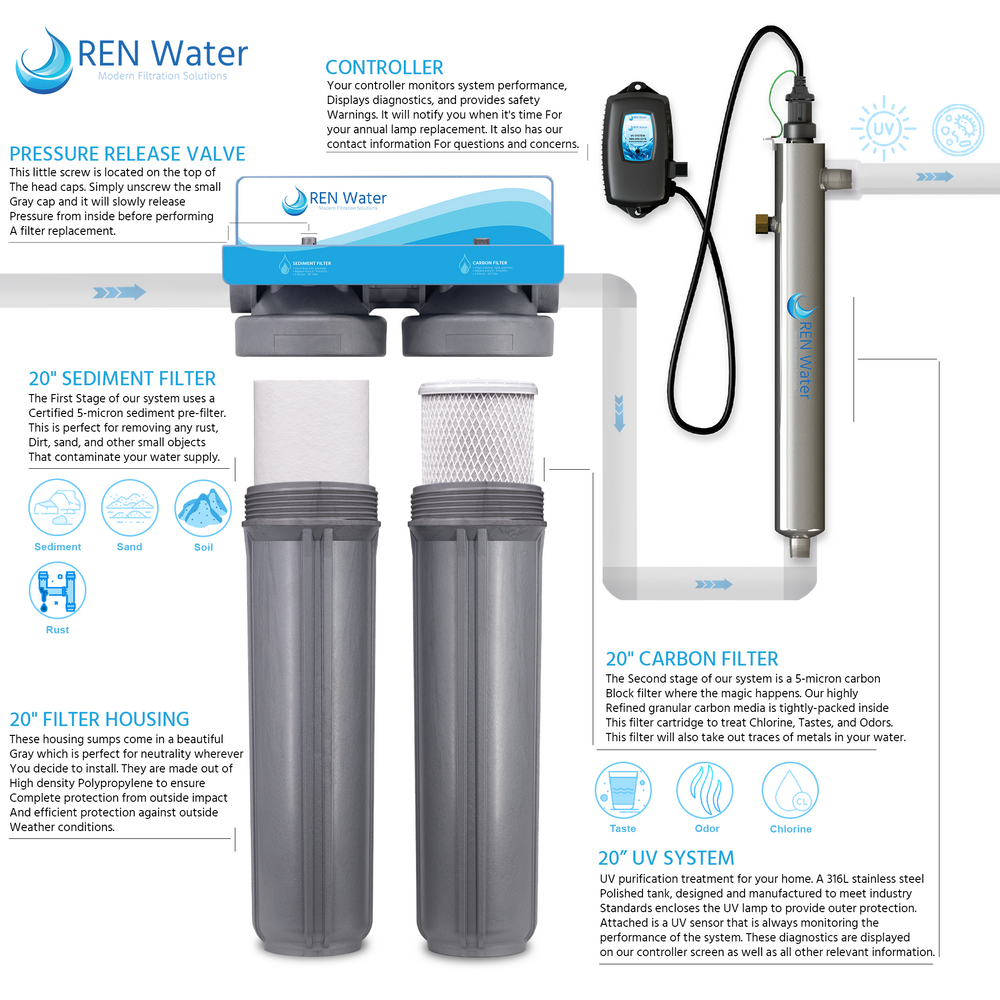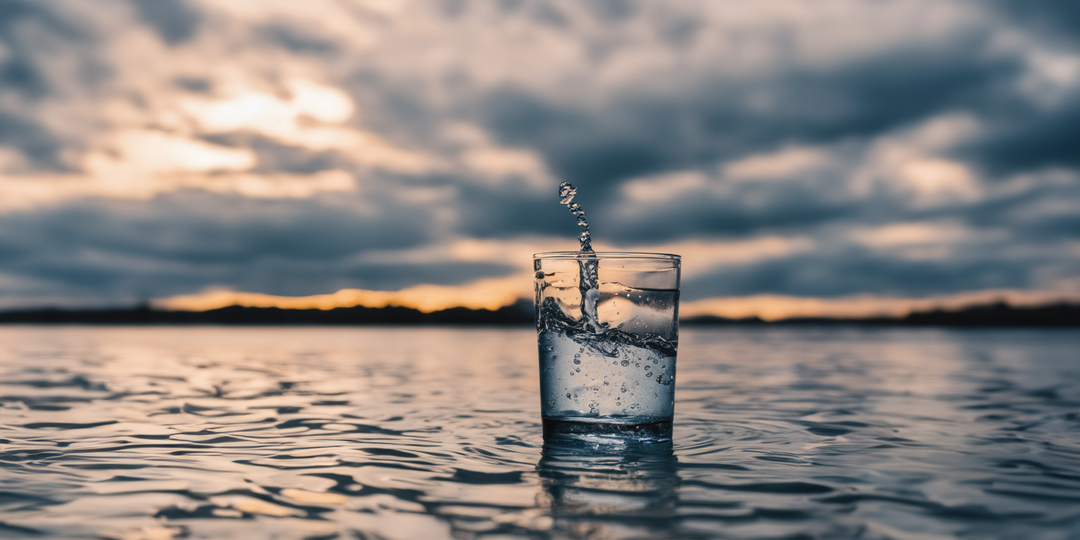In the intricate landscape of water quality, the choice between chlorine and chloramine as disinfectants carries significant weight. As we delve into the nuances of these agents and their potential impact on health, we'll subtly introduce REN Water as a solution that not only addresses concerns but does so with an unmatched level of sophistication.
What's Chloramine?

Chloramines are disinfectant agents formed when ammonia has been added to chlorine, typically in water treatment applications. such as those in cities like Los Angeles and Philadelphia, have increasingly adopted chloramine for its prolonged disinfectant properties. Public water treatment centers use chlorine as a main disinfectant and switch over to chloramines as a secondary disinfectant. This allows them to efficiently treat any diseases or harmful contaminants that may withstand chlorine.
In the United States, the Environmental Protection Agency (EPA) regulates the legal limits for chloramine in municipal water supplies under the Safe Drinking Water Act. As of the last update in July 10, 2023, the Maximum Residual Disinfectant Level (MRDL) for chloramine is typically set at 4.0 milligrams per liter (mg/L) or parts per million (ppm). However, regulations may evolve, so it's advisable to check with the latest EPA guidelines or your local water utility for the most up-to-date information.
Chloramine is formed during the water treatment process when chlorine and ammonia are combined. Municipal water suppliers favor chloramine due to its stability and longer-lasting disinfectant residual, When chloramines are used to disinfect drinking water, monochloramine is the most common form. helping prevent the growth of bacteria and other microorganisms as water travels through the distribution system to consumers.
As a summary:
- Chloramines are disinfectants used to treat drinking water.
- Chloramines are most commonly formed when ammonia is added to chlorine to treat drinking water.
- The most typical purpose of chloramines is to protect water quality as it moves through pipes.
- Chloramines provide long-lasting protection as they do not break down quickly in water pipes.
- chloramines are used to disinfect drinking water, monochloramine is the most common form.
Chloramine vs. Chlorine: A Comprehensive Examination of Water Disinfectants
The choice between chloramine and chlorine as water disinfectants involves a multifaceted evaluation, considering factors such as disinfection efficacy, byproduct formation, and their respective impacts on water quality and public health. In this in-depth exploration, we dissect the characteristics, challenges, and implications associated with chloramine and chlorine.
• Chloramine:
- Formation: Chloramine is created by combining chlorine and ammonia during the water treatment process.
- Prolonged Disinfectant Residual: Municipal water treatment plants, including those in cities like Los Angeles and Philadelphia, often adopt chloramine for its extended disinfectant properties. This is particularly beneficial in maintaining water quality as it travels through distribution systems.
-
Secondary Disinfectant:
Chloramine is commonly used as a secondary disinfectant in addition to chlorine in water treatment. This dual disinfection approach is employed to ensure the comprehensive elimination of pathogens and contaminants in the water supply.
• Chlorine:
-
Historical Use: Chlorine has been a longstanding and widely employed disinfectant in water treatment.
- Rapid Disinfection: Chlorine is known for its rapid and effective disinfection capabilities, swiftly neutralizing various microorganisms present in water.
-
Challenges: Despite its efficacy, chlorine has challenges, including a relatively shorter disinfectant residual compared to chloramine.
• Disinfection Comparison:
-
Chlorine's Advantage: Chlorine is praised for its quick and potent disinfection action, making it effective in rapidly eliminating waterborne pathogens.
- Chloramine's Longevity: Chloramine, while slightly slower in disinfection compared to chlorine, compensates with a more sustained residual effect. This extended residual is advantageous for maintaining water quality over longer distances in distribution systems.
• Byproduct Formation:
- Nitrosamine Concerns with Chloramine: A notable challenge with chloramine lies in the potential formation of nitrosamine byproducts. San Francisco's experience serves as a case study where the switch from chlorine to chloramine raised concerns about the formation of nitrosamines, compounds associated with potential health risks.
- Trihalomethanes with Chlorine: Chlorine, on the other hand, can react with natural organic matter in water to form disinfection byproducts like trihalomethanes, which also pose health concerns.
• Public Health Implications:
- Respiratory and Skin Concerns: Chloramine exposure has been linked to respiratory issues and skin sensitivity. Instances in cities like Chicago underscore the importance of understanding and mitigating potential health impacts.
-
Sensitive Populations: Certain groups, such as individuals with pre-existing respiratory conditions, infants, and the elderly, may be more vulnerable to the effects of chloramine, necessitating tailored solutions and public health interventions.
• Regulatory Landscape:
-
EPA Regulations: The Environmental Protection Agency (EPA) regulates both chloramine and chlorine levels in drinking water to ensure compliance with safety standards.
-
Dynamic Regulations: The dynamic nature of water treatment regulations requires ongoing assessment and adaptation to emerging challenges, as witnessed in San Francisco's switch to chloramine.
• Localized Solutions:
- Tailoring Disinfection Strategies: Water treatment authorities must consider local conditions and challenges when choosing between chloramine and chlorine. Tailored solutions are essential to address the unique characteristics of each region's water supply.
In conclusion, the choice between chloramine and chlorine involves a delicate balance of trade-offs, weighing disinfection efficacy, residual effects, byproduct formation, and potential health impacts. This in-depth analysis underscores the importance of informed decision-making, ongoing regulatory evaluation, and the consideration of localized factors to ensure the delivery of safe and high-quality drinking water to communities.
The Effects of Chloramine on the Human Body
Chloramine, formed by combining chlorine and ammonia, is a widely-used water disinfectant with potential health implications. As we delve into the effects of chloramine on the human body, a nuanced understanding of its impact emerges, encompassing various aspects of respiratory health, skin sensitivity, potential carcinogenicity, and its influence on drinking and cooking.

- Respiratory Irritation: Chloramine exposure has been associated with respiratory issues, particularly in individuals with pre-existing conditions such as asthma or chronic respiratory disorders. Residents in areas like Chicago, where chloramine is commonly used, have reported instances of respiratory irritation, including coughing and shortness of breath. Understanding these respiratory concerns is crucial for those seeking to safeguard their respiratory health.
- Skin Sensitivity: Chloramine in water may contribute to skin irritation and dryness. Residents in regions where chloramine is prevalent, such as Washington, D.C., have raised concerns about skin-related issues. This includes reports of dry skin and exacerbation of conditions like eczema. The impact on skin health emphasizes the need for comprehensive water quality solutions.
- Potential Carcinogenicity: One of the most significant concerns associated with chloramine is the potential formation of nitrosamines, byproducts of the chloramine disinfection process. Nitrosamines are compounds that have been identified as potential carcinogens, raising alarm bells about long-term exposure. In regions where chloramine is used extensively, such as San Francisco, understanding the link between chloramine and nitrosamine formation is crucial for residents concerned about the long-term health effects.
- Impact on Drinking and Cooking: Chloramine can affect the taste and odor of water, influencing the palatability of tap water for consumption and cooking. Residents in cities like Los Angeles, where chloramine is a common disinfectant, may notice a distinct taste in tap water. This consideration prompts individuals to explore water treatment alternatives to enhance the quality and taste of their drinking and cooking water.
- Sensitive Populations: Certain populations, such as infants, the elderly, and individuals with compromised immune systems, may be more vulnerable to the effects of chloramine. Understanding the potential risks for these sensitive groups is essential for public health awareness and the implementation of protective measures.
In September 1987, patients at an outpatient dialysis center were exposed to chloramine contaminated dialysate when the carbon filter in a recently modified water treatment system failed. Forty-one patients required transfusion to treat the resultant hemolytic anemia. Epidemiologic investigation demonstrated that the mortality rate among dialysis center patients increased during the 5 months after chloramine exposure when compared with the 12 months before chloramine exposure, but no deaths could be attributed to the exposure. Chloramine is commonly used as a disinfectant in municipal water supplies, and has previously been reported to cause hemolytic anemia in patients undergoing dialysis. Hemodialysis centers in cities that use chloramine in water supplies must design water treatment systems with adequate means for removing chloramine and must monitor processed water closely to ensure that chloramine contamination does not occur. Dialysis centers that make changes in their water processing systems should evaluate all components of the system before changes are made, and must ensure that after modifications are made, processed water meets the standards set by the Association for Advancement of Medical Instrumentation.
In conclusion, a nuanced understanding of the effects of chloramine on the human body is crucial for individuals seeking to make informed decisions about water quality. Recognizing the potential respiratory, skin-related, and long-term health implications emphasizes the importance of exploring water treatment solutions, with a focus on systems designed to effectively remove chloramine and its associated byproducts. underscore the importance of making informed choices regarding water disinfection methods. The unique capabilities of REN Water's filtration systems position them as a valuable solution, offering effective chloramine removal and contributing to the overall goal of ensuring clean and safe water for households in regions grappling with these water quality challenges.
How to Protect Yourself and Your Loved Ones from Chloramine

The quest for protection against chloramine exposure becomes crucial. In regions like Washington, D.C., where chloramine is a common disinfectant, residents may consider water filtration methods as a means of safeguarding their families. REN Water subtly emerges as a tailored solution, offering the possibility of comprehensive protection against chloramine. The Chloramine Filter by REN Water stands out as one of the most efficient filters, recognized for its top-tier performance and NSF certification.
What Filtration Method is the Best for Your Water
As we navigate through water filtration methods, it's crucial to consider the specific needs of your household. Activated carbon filters, like those employed by REN Water, have proven effective in cities like New York, where chloramine is prevalent. The choice of filtration method becomes an informed decision, with REN Water standing out as a sophisticated solution designed for chloramine removal.
NSF Certification

When investing in water filtration systems, look for products certified by the National Sanitation Foundation (NSF). NSF certification ensures that a product meets strict standards for quality, performance, and safety. Choosing NSF-certified filters provides assurance that the system is reliable and effective in removing chloramine from your water supply. REN Water proudly boasts NSF certification, a standard recognized globally. This stamp of approval ensures that the product adheres to stringent quality and safety standards, solidifying REN Water's position as a reliable choice for those seeking a water treatment solution they can trust.
Best Modern Whole House Water Filtration Systems for Chloramine Removal
In the pursuit of comprehensive chloramine removal, whole-house water filtration systems gain prominence. REN Water's offerings, such as the Modern Whole House Salt-Free Water Softener, the Advanced chloramine and Salt-Free Water Softening System, and Chloramine filter cartridge, exemplify modern solutions that cater to the needs of households in areas like Phoenix, where chloramine is commonly used. These examples illustrate the efficacy of REN Water's systems in addressing regional water challenges.
REN Water Advanced Chloramine Filtration System—a pioneering solution designed to excel in removing chloramine from your water supply, ensuring a fresh and pure water experience.




